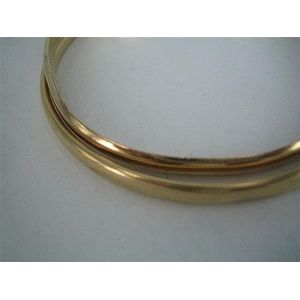Guilloche Enamel Compact by Henry Clifford Davis, 1935
A sterling silver and guilloche enamel compact, 1935 Birmingham, with maker's marks for Henry Clifford Davis. the circular compact decorated with an optical fan shaped wavy line design in cream, engine turned to the reverse; hallmarked to the side, diameter 7 cm
You must be a subscriber, and be logged in to view price and dealer details.
Subscribe Now to view actual auction price for this item
When you subscribe, you have the option of setting the currency in which to display prices to $Au, $US, $NZ or Stg.
This item has been sold, and the description, image and price are for reference purposes only.
- Engine Turned - Engine turning is a decorative technique used on metal surfaces to create intricate curving or geometric pattern. The process involves cutting a series of lines into the surface of the metal using a rose engine or decoration lathe which rotates the metal as it cuts, allowing the operator to create a repeating pattern that covers the entire surface. The resulting surface has a shimmering, reflective quality that is often described as "engine turned." Where an engine turned item has been enamelled, the term used to describe the decoration is usually guilloche.
Engine turning was originally developed to decorate metal objects such as firearms, scientific instruments, and other metal objects that required precise and elegant design. - Sterling Silver - Sterling silver is a mixture of 92.5% pure silver and 7.5% of another metal, usually copper. Fine silver is 99.9% pure silver, and is relatively soft and the addition of the very small amount of copper gives the metal enough strength and hardness to be worked into jewellery, decorative and household objects.
- Guilloche - A form of classical decoration consisting of a repeating ornament of interlacing curved bands, sometimes forming circles, and further decorated with rosettes or other flower forms.
The name is derived from the inventor, French engineer Guillot, who invented a mechanical method of inscribing fine repeating patterns on to metallic surfaces.
On enamelled items with guilloche decoration, the surface is firstly engraved with the repeating pattern, and then covered with several layers of enamel, each of which is fired.
Where the item has not been enamelled the form of decoration is usually called "engine turned".
This item has been included into following indexes:
Visually similar items

Silver and minty green guilloche enamel compact John Gloster design, Hall marked Birmingham 1945.
Sold by
in
for
You can display prices in $Au, $US, $NZ or Stg.

Roy Cowan, charger, paper label, 41 cm dia
Sold by
in
for
You can display prices in $Au, $US, $NZ or Stg.

Two bangles, one 9ct gold (12.6g), the other wax-filled 9ct gold (18.9g). (2)
Sold by
in
for
You can display prices in $Au, $US, $NZ or Stg.

Hardy Bros sterling silver compact hallmarked Birmingham 1956,
Sold by
in
for
You can display prices in $Au, $US, $NZ or Stg.
